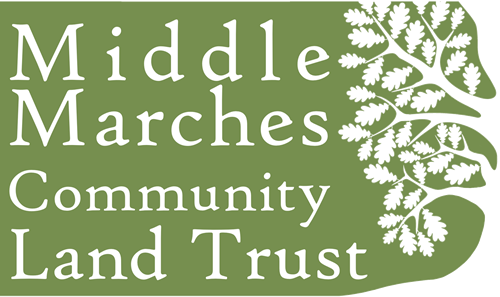Our New Field – Guest Blog
By Sarah Jameson
Last Autumn we bought a field at auction. Not just any field, but the 11.4 acre field alongside our house and garden here in the lovely Redlake Valley, where we have lived for 20 years.

Our field amongst the tapestry of fields in the Redlake (July 2019) by Sarah Jameson
We are really concerned about severe declines in biodiversity, and we want to learn how to manage the field for nature, so we are novice landowners, beginning on a very steep learning curve!
We were advised first of all to leave the field free of livestock for around 12 months to ‘see what came up’. This we did, and by the late spring of 2019, the plant list amounted to 100+ species of flowering plants, grasses and fungi. Nothing exotic or particularly rare, but a nice mix of traditional grassland and haymeadow-type plants and a number of axiophytes (indicators of good habitat and little poems in their own right, such as Parsley Piert, Early Hair Grass, Heath Grass, Silver Hair Grass, Prickly Sedge, Changing Forget-me-Knot, Betony etc).
The field seems to fall naturally into several habitat areas: damp and rushy at the bottom with a watercress-filled watering hole for livestock (fed constantly by an underground land drain, we think was dug in the 1940s), rising to steep-sided, thin-soiled, rounded ‘tumps’ (or hillocks) with their summer-flowering anthills. Above that, an area of (slightly!) more gently sloping grassland running right up to the top of the field with an ephemeral stream that courses down one side in Winter months. This part of the field was cut for hay in July this year. Roughly triangular in shape, the field is south-facing and free draining for the most part.

Drone view of the field (February 2019) by Sarah Jameson
There are no standing trees in the field, other than a single Willow. There are hedgerow trees, including Hawthorn, Blackthorn, Black Poplar, Hazel and Elder. The hedging is good in places, very patchy in others.

Serpentine hedge by Sarah Jameson
So, our future plans revolve around developing the field into a ‘mosaic’ of habitats to include:
- At the bottom: rewetting the rushy area and planting it with ‘wet woodland’ cover (such as Alder and Willow) and creating some standing water by scooping out a pond.
- On the tumps: managing the anthill meadows for their joyous blanket of summer wildflowers. This may involve scything off the standing (long grass) – another new skill to learn.

Anthill Meadow in setting sun (July 2019) by Sarah Jameson
- In the main “hay meadow” area: introducing Yellow Rattle, the ‘meadow-maker’ in trial areas via locally-gathered seed to help establish more wildflowers. For now, the grassland areas will be managed by a combination of sheep grazing and mechanical – and manual! – grass removal.

Sheep grazing in the field (before 2018) by Sarah Jameson

Bales awaiting collection (July 2019) by Sarah Jameson
- Planting trees. We do really want to plant trees too, but being keenly aware of the importance (and tragic decline) of hay meadows, we now think we will plant wide strips of trees along the hedgelines, rather than scattered copses, which would create more shade.
- At some point, restoring the old fallen-down field barn whose dilapidated timber frame clad in rusty tin sheets had been something of a declining feature for some years.
We have had much help and guidance so far from a variety of knowledgeable people and are lucky to have neighbouring farmers who have cut and baled the hay and are keen to graze the land.
I have created a website and blog to chart our progress over time – so, a novice blogger and a novice land manager rolled into one! https://sarahnewinvention.wixsite.com/we-bought-a-field
